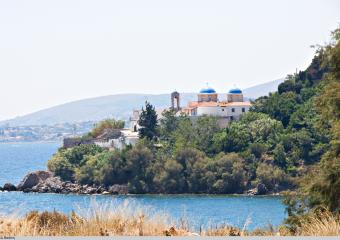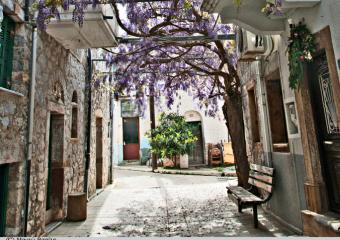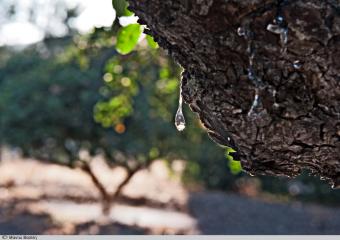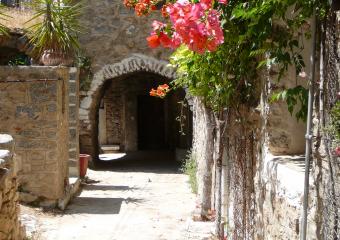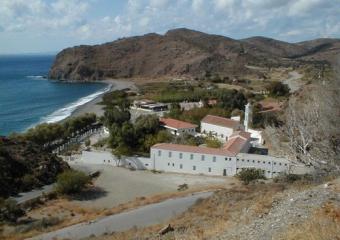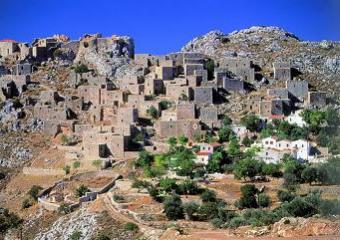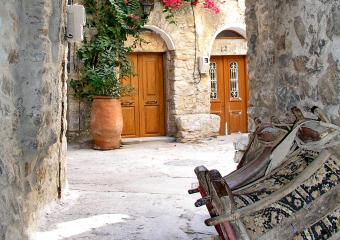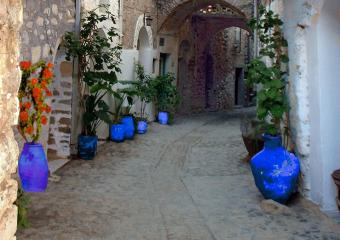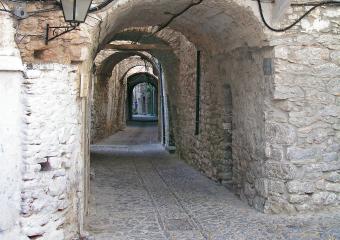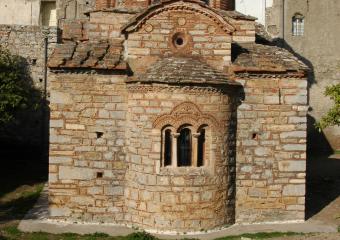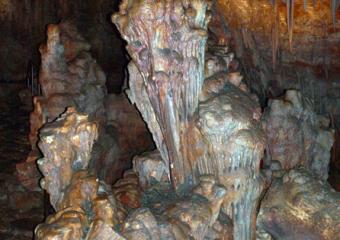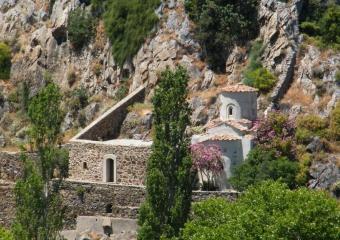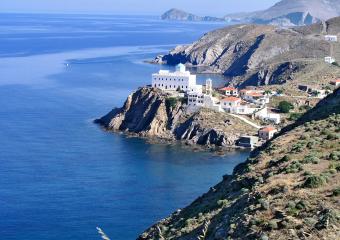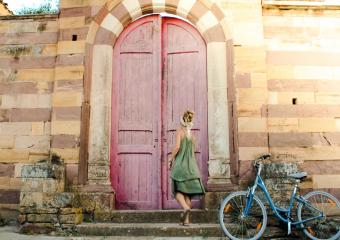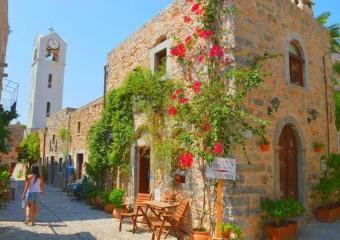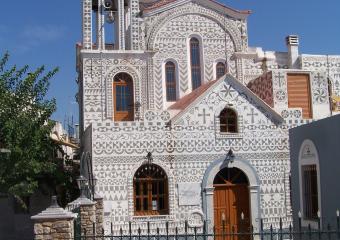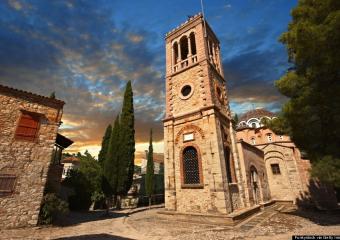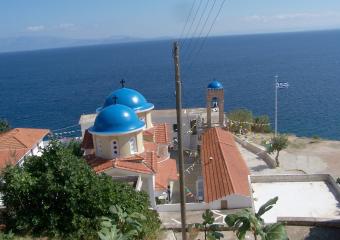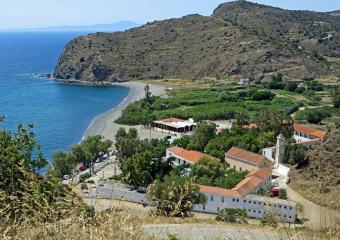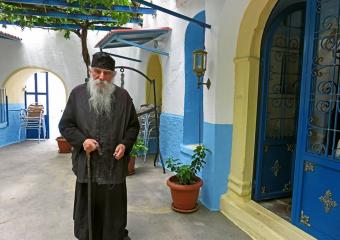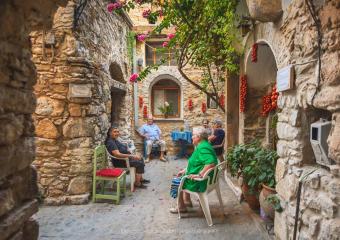Culture Panagia Agio Gala Chios
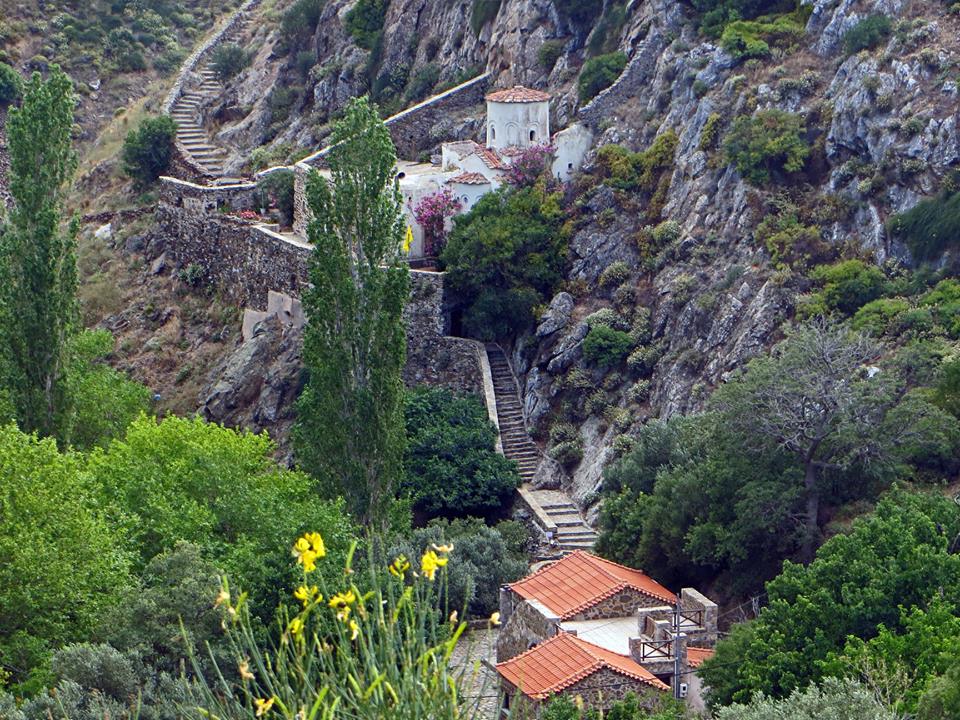
Culture places loved by locals & visitors
• Koraes Library & Argenti Folklore Museum
The Koraes Library is one of the biggest cultural libraries in Greece. Founded in 1792, it was originally an annex to the Great School of Chios.
The library’s first collection was built around the books that belonged to Koraes and his friends, namely Greek intellectuals from abroad.
It is the most important library in the whole region. After a major earthquake in 1881, it was moved into a new building where it has remained ever since.
Initially, the building had only one floor; the second one was added after 1948 by the major donator Philip Argenti. Important upgrades and additions took place in the period 1975-78, again with initiatives by the Argenti family.
In the same building, on the second floor, you may visit the Argenti Folklore Museum, exhibiting clothes and implements of the everyday life of Chians during the 17th to 19th centuries.
Both the library & Argenti Museum are located in the heart of City Center, 2, Koraes St.
Opening Hours for both Koraes Library and Argenti Folklore's Museum:
Monday – Friday 08:00-14:00,
Saturday 09:00-14:00 only For Koraes Library
Sunday closed
Tel. +30 22710 28256, +30 22710 44246
Ticket: 2€, 1€ for seniors, free entrance for the students, and people with disabilities.
• Nea Moni Monastery
The Nea Moni monastery is in central Chios on the road to Karyes village.
It was founded in the early 11th century. At the center of the monastery lies the katholikon (main church), a monument of exquisite architecture and art. Nea Moni is a Monument of World Cultural Heritage, according to UNESCO.
The monastery has survived a lot of attacks and pillages during its 9-century- history. Thus, its original wealth has perished.
All the artifacts that are exhibited in the monastery's small museum are of the modern era and have been donated to the monastery.
The museum was renovated in 1980 and the visitor can see objects of ecclesiastical and secular silver art of the 18th and 19th centuries, as well as icons of the same period.
The museum is curated by the 3rd Division of Byzantine Antiquities of the Greek Archaeological Service.
Opening hours: Tuesday to Sunday 08:00 – 13:00.
Telephone: +30 22710 79370
Entrance: 2€ (for the museum)
The Chios Mastic Museum is located in Southern Chios, in the region of the Mastichochoria.
Address
Pyrgi, Rachi site (Tepeki)
82102 Chios, Greece
Access
By car, following the Chios Town-Pyrgi provincial road.
Opening hours:
From March 1st through to October 15th:
Daily (except Tuesdays) 10 am-6 pm.
From October 16th through to February 28th:
Daily (except Tuesdays) 10 am-5 pm.
Closed on: Tuesdays, January 1st, Good Friday (until 12 noon), (Greek Orthodox) Easter Sunday, May 1st, July 22nd (local patronal feast), August 15th, December 25th, and 26th.
Admission
Standard entrance fee: € 4,00
Concessionary ticket: € 2,00.
Free admission: Please.
Days of free admission:
May 18th (International Museum Day)
June 5th (World Environment Day)
Last weekend in September (European Heritage Days)
Amateur photography or video filming is permitted. Professional/commercial photography or filming is strictly prohibited without prior special permission from PIOP. Application for a special permit.
• Daskolopetra (Homerus Stone)
The Daskalopetra rock, which is located at Daskalopetra beach in the area of Vrontados, is one of the island’s most well-known archaeological sites and it has always been a sightseeing culture attraction.
According to tradition, this is actually the stone where Homer was seating on and was narrating his poems.
As it is known, Homer did never write his poems as he was probably blind, but he was narrating them to his students who were writing them for himself.
The name of this place daskalopetra actually means the stone of the teacher in Greek, referring to the great poet Homer. Chios is one of the seven cities (Izmir, Chios, Colophon, Ithaca, Pyrgos, Argos, and Athens) that are claiming Homer's origin.
It is considered to be the most likely among the possible birthplaces of Homer, given valid evidence by a number of ancient writers and poets. This spot gives a wonderful view of the area, the sea and the village of Vrontados.
Entrance: Free
• The Medieval Castle of Chios
The Castle of Chios, known as Frourio (Fortress), is located on the north side of the harbor, very close to the central park "vounaki". It was built in the 10th century by the Byzantines and then restored and expanded by the Genoese.
The main gate of the Castle is called Porta Maggiore. Nowadays, about 600 people reside within the castle. A covered walkway leads to the "Ioustiniani Palace" which now is a museum and to the "Dark Prison" a place where prisoners were held.
Having a walk around there are a lot of interesting things to see, each one with its own unique story. One of which stands out is the picturesque central square.
For visitors who are interested in Byzantine and Genoese history the "Ioustiniani Palace contains the following exhibits:
Byzantine murals, post-Byzantine icons.
Byzantine and Genoese sculptures and small-scale works of art.
It is situated between the central gate of the Castle of Chios and the main square of the town.
Opening Hours: Tuesday – Sunday 08:30-15:00, Monday closed
Tel. +30 22710 22819
Entrance: 2€. 1€ for Greek pupils and students.
• Anavatos-Avgonima
Anavatos is a stunning medieval village built on a cliff, all of stone. Located in Central Chios, Just 17 Kilometers from the city, it is only 40 minutes drive.
The village has been abandoned since 1822, nowadays only a few villagers habit there. It used to be a very important place in the island due to its prominent position.
This restful village is picturesque, waking memories of the past life to its visitors. Anavatos is considered to be a national monument to all Chians and Greeks.
Very close to Nea Moni monastery it is definitely a must-visit village. Compared to your visit with lunch at Avgonima, just 15 minutes away, also of the great importance of the graphic medieval village.
• Mesta
Mesta is the diamond of south Chios! Even if it is the most distant of the medieval villages, this village is awesome, as it is a real fortress.
You can reach Mesta by crossing south to Mastichochoria (Mastichochoria means villages that produce mastic). The journey will be unique as you will have the chance to smell and admire the mastic trees.
Upon entering the gateway of the fortress, you will sense the awe-inspiring, warm atmosphere of this medieval village, which was built during the Genoese domination, and is a model of defensive architecture.
The houses are built side-by-side to each other, so tightly that there are only two entrances to the village. The streets are very narrow, and most of them are covered with arches and vaults.
The ancient churches and the magnificent stone houses are tightly joined together one next to another. Visit the old but well-preserved church of Taxiarchis, taste ice cream at "Livadi" square, head to the tiny local museum called "Mestousiko Spiti" (house of Mesta), take a romantic stroll along the narrow winding streets, choose one of the 5 close beaches to dive in.
• Pirgi
Pyrgi along with Mesta and Olympi is in the south part of the island of Chios, consisting of the complex of Mastichochoria. Pirgi is one of the areas which still stands as it was built.
It is a tradition that all houses of the village are built with unique black and white geometrical decor on their outer walls.
• Chios Mastic Museum
Traditional mastic cultivation continues to be alive today and is an element both of the inhabitants’ identity and of the locality’s history. Entrance fee 3 euro per person. Closed every Tuesday.
• Olympi Cave
The Cave of Olympi is located 8km. in the south of the medieval village of Olympi. It was explored in 1985 by the Greek Speleological Society.
The temperature (18 grades Celcius) and the humidity (95%) inside the cave are practically stable throughout the year while guttation varies seasonally. Combine your visit to Olympi cave with a dip to the imaginary beach "Agia dynami".
• Agio Galas
It is definitely the most remote village on the island. Also built on a cliff. You may need 2 hours drive to reach but you will be rewarded. Get yourself there for a day and leave the world behind!
The top sights of the area are the church "Panagia Agiogalousena" (Virgin Mary), the cave of Agio Galas, which was discovered in 1969, and of course at the central square where you can try homemade tastes. For the adventuresome, when being at the village square.
